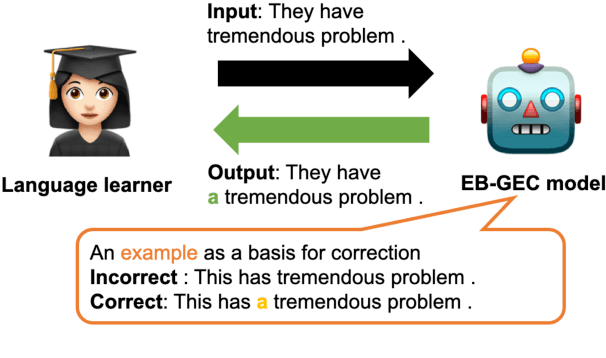Interpretability for Language Learners Using Example-Based Grammatical Error Correction
Paper and Code
Mar 14, 2022



Grammatical Error Correction (GEC) should not focus only on high accuracy of corrections but also on interpretability for language learning. However, existing neural-based GEC models mainly aim at improving accuracy, and their interpretability has not been explored. A promising approach for improving interpretability is an example-based method, which uses similar retrieved examples to generate corrections. In addition, examples are beneficial in language learning, helping learners understand the basis of grammatically incorrect/correct texts and improve their confidence in writing. Therefore, we hypothesize that incorporating an example-based method into GEC can improve interpretability as well as support language learners. In this study, we introduce an Example-Based GEC (EB-GEC) that presents examples to language learners as a basis for a correction result. The examples consist of pairs of correct and incorrect sentences similar to a given input and its predicted correction. Experiments demonstrate that the examples presented by EB-GEC help language learners decide to accept or refuse suggestions from the GEC output. Furthermore, the experiments also show that retrieved examples improve the accuracy of corrections.
 Add to Chrome
Add to Chrome Add to Firefox
Add to Firefox Add to Edge
Add to Edge